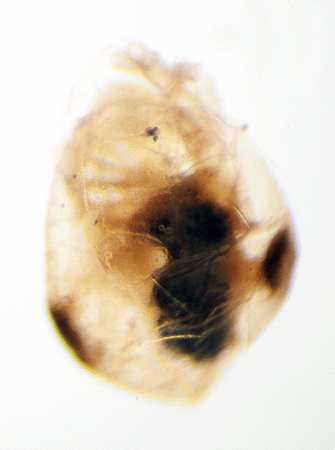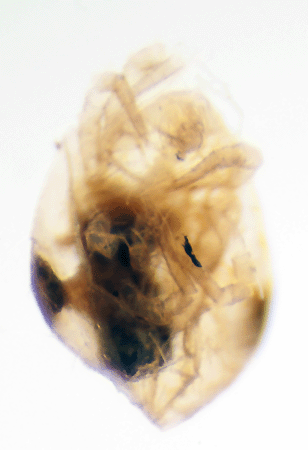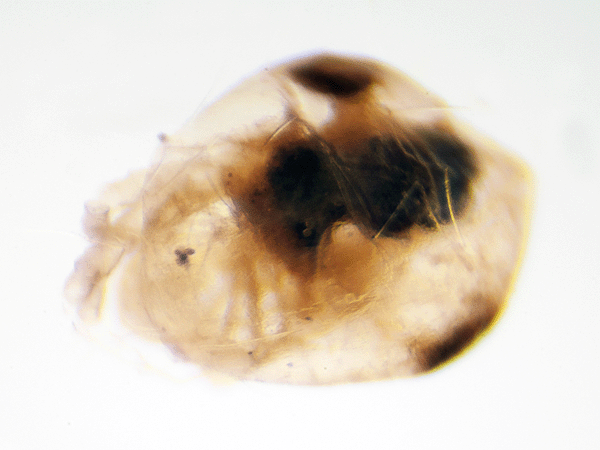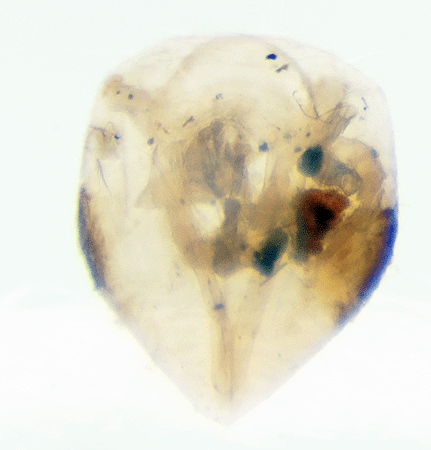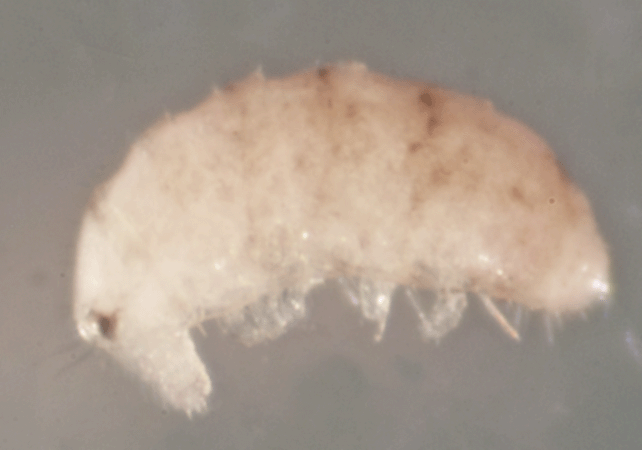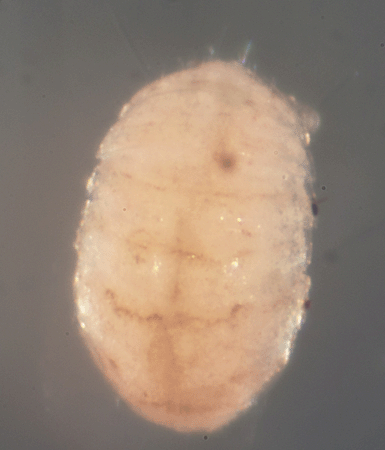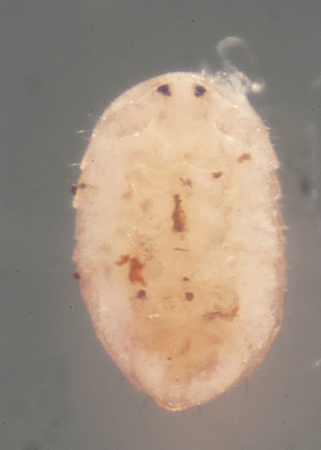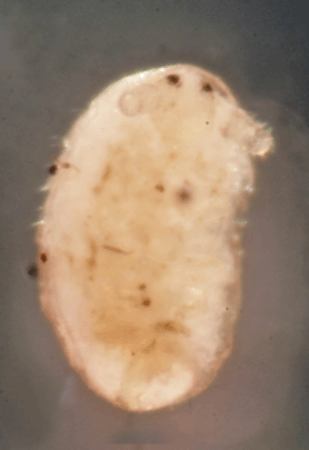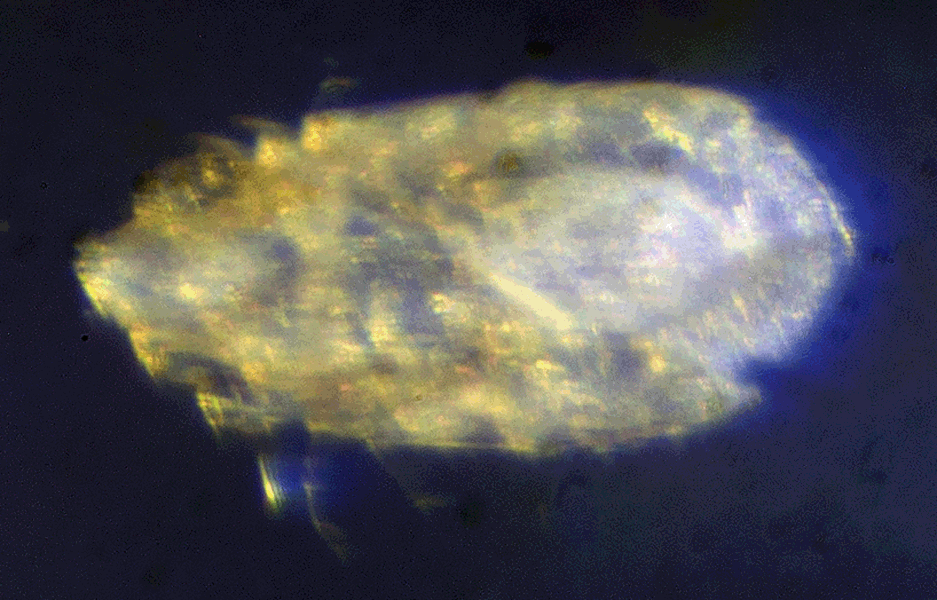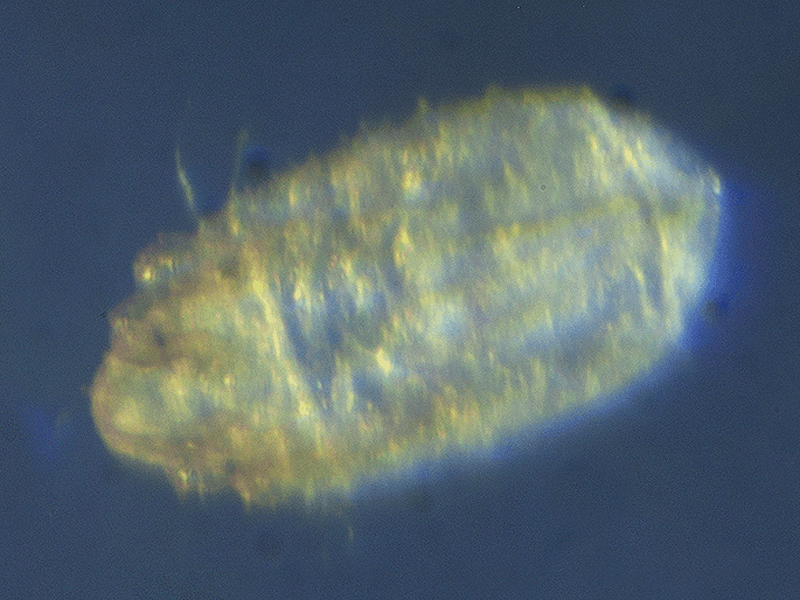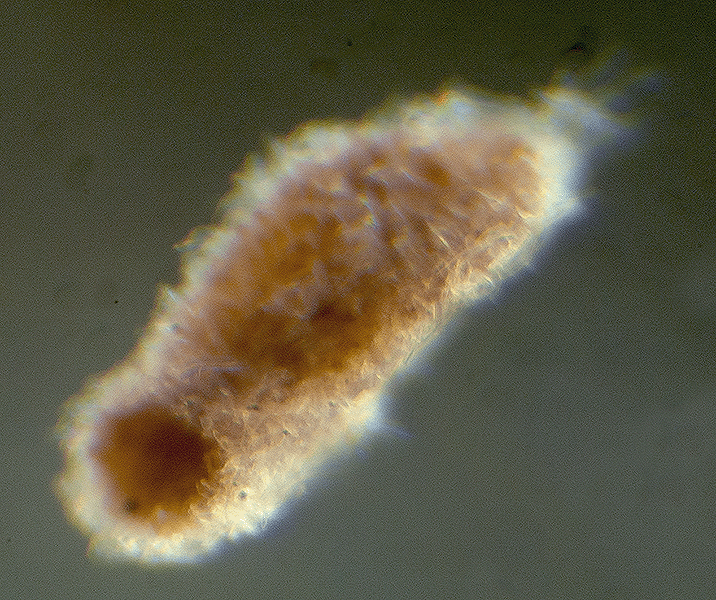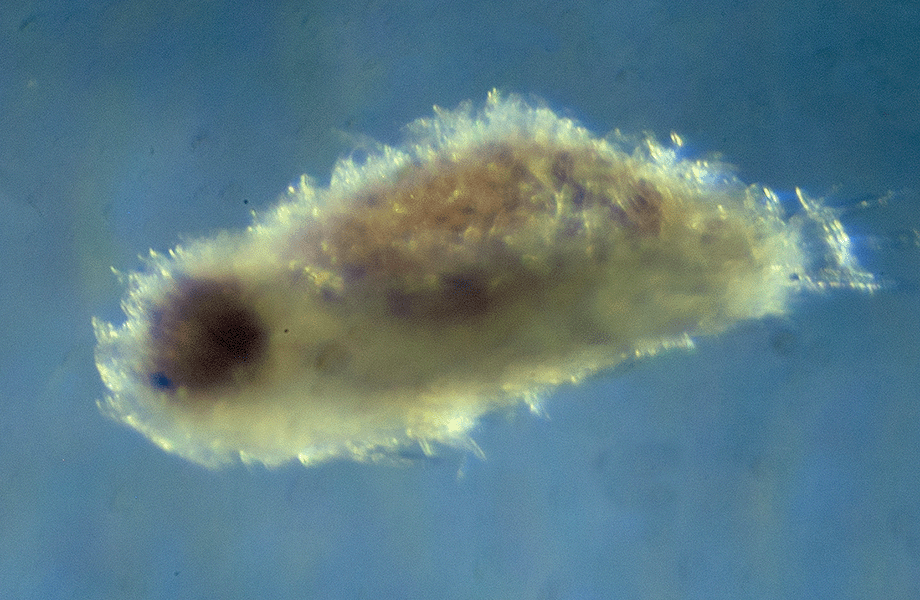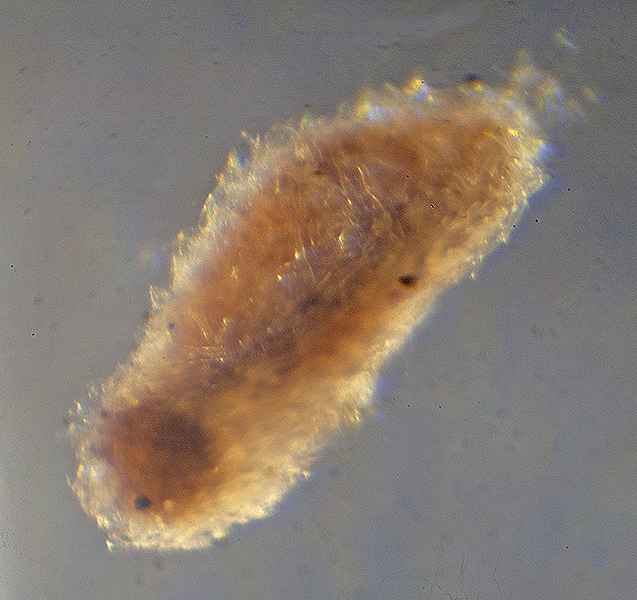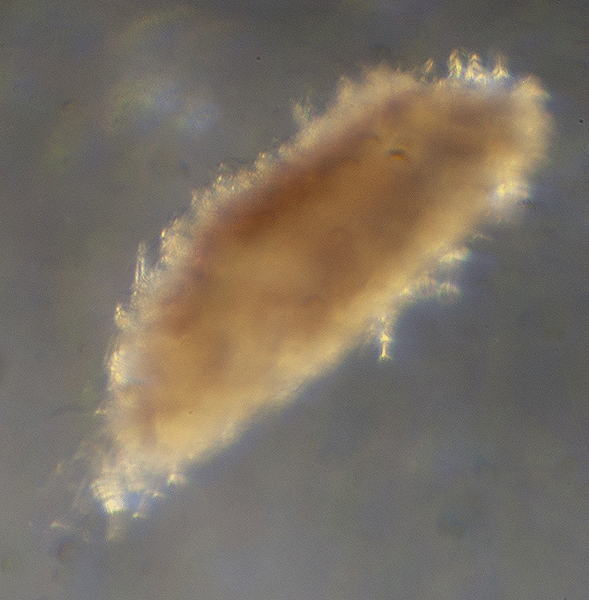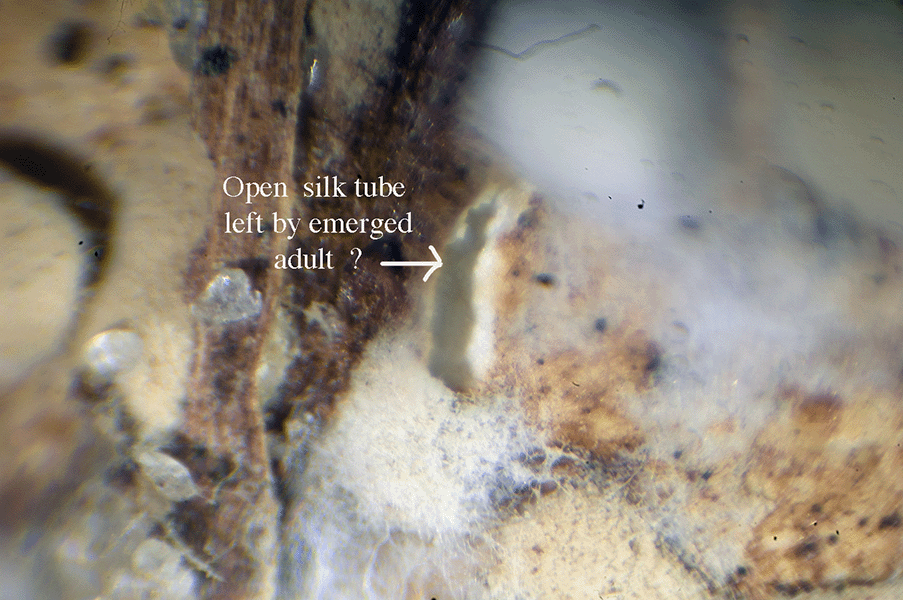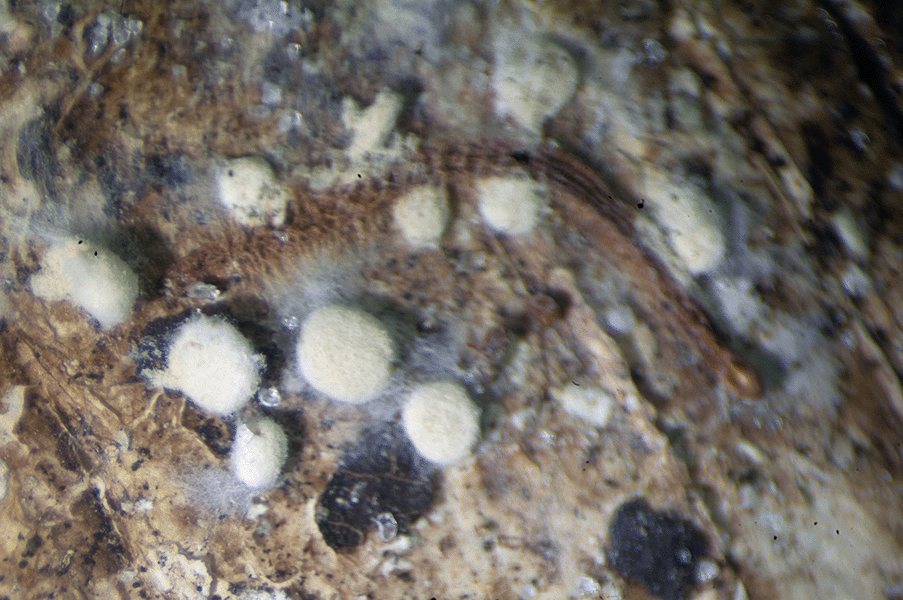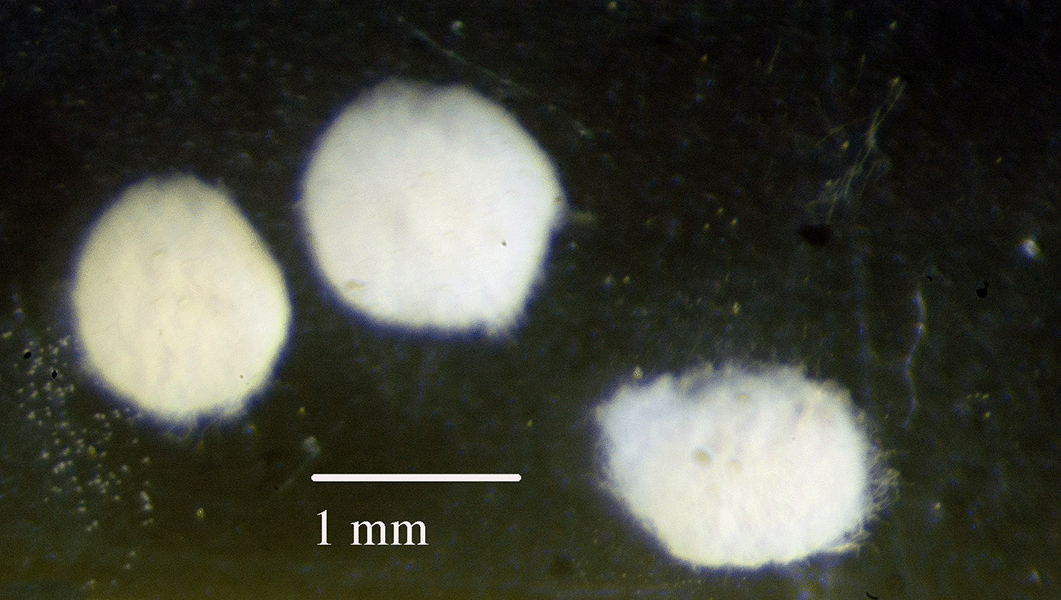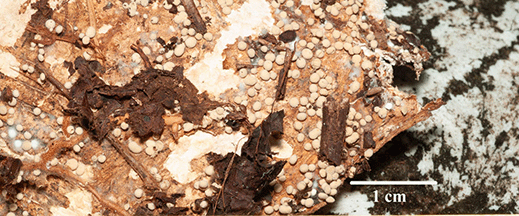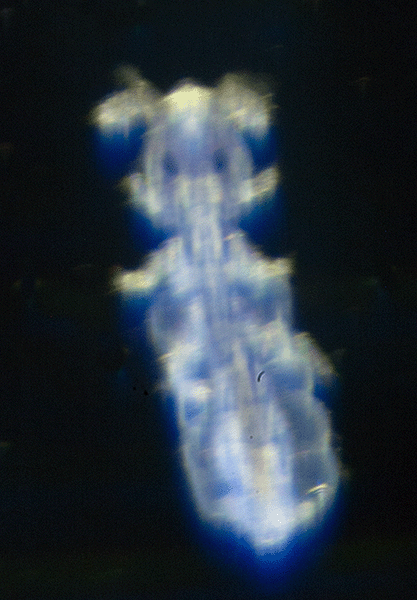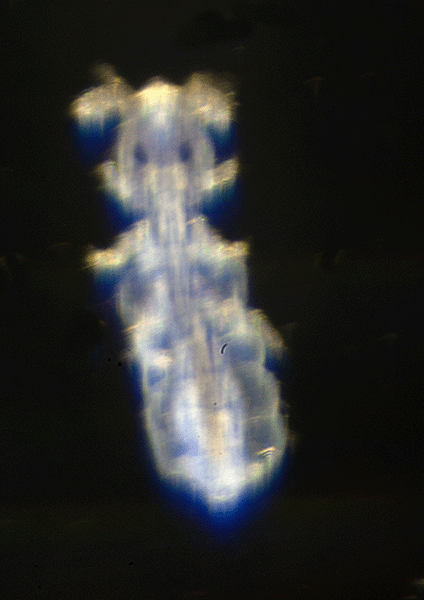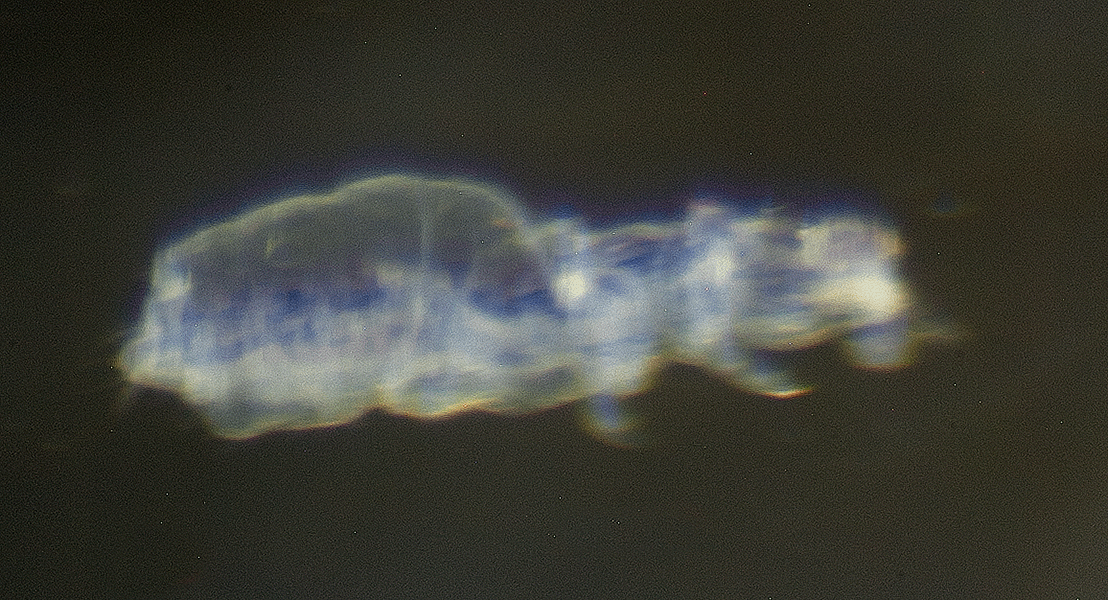On February 17, 2024, the arthropod below, which appears to be inside an egg, was captured with a sweep net used in Ceratiola ericoides (Florida Rosemary) bushes. The total length of the object, with its surrounding capsule, was 1.25 mm. These images were created using photomicroscopy, and sent for identification to <Bugguide.net>, sponsored by Iowa State University's Department of Entomology.
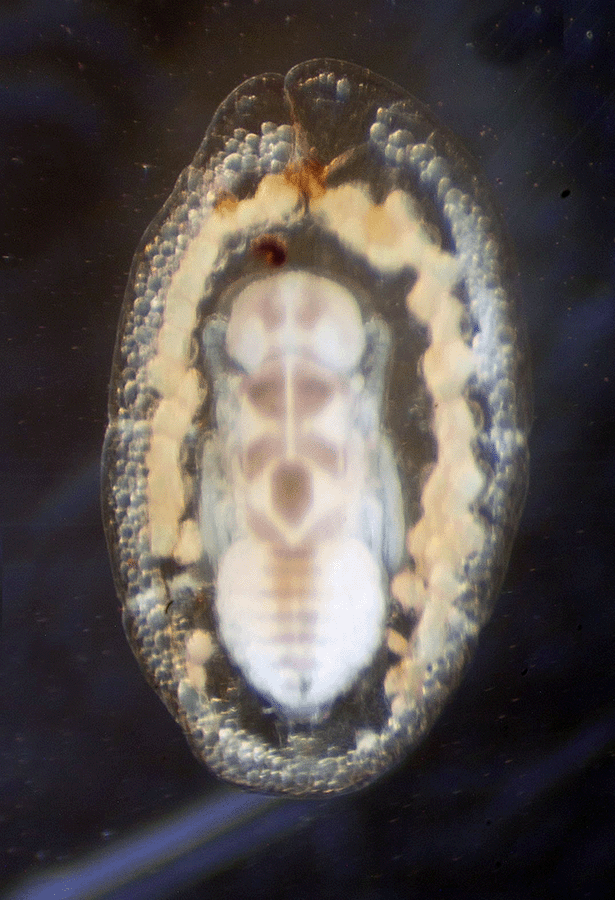
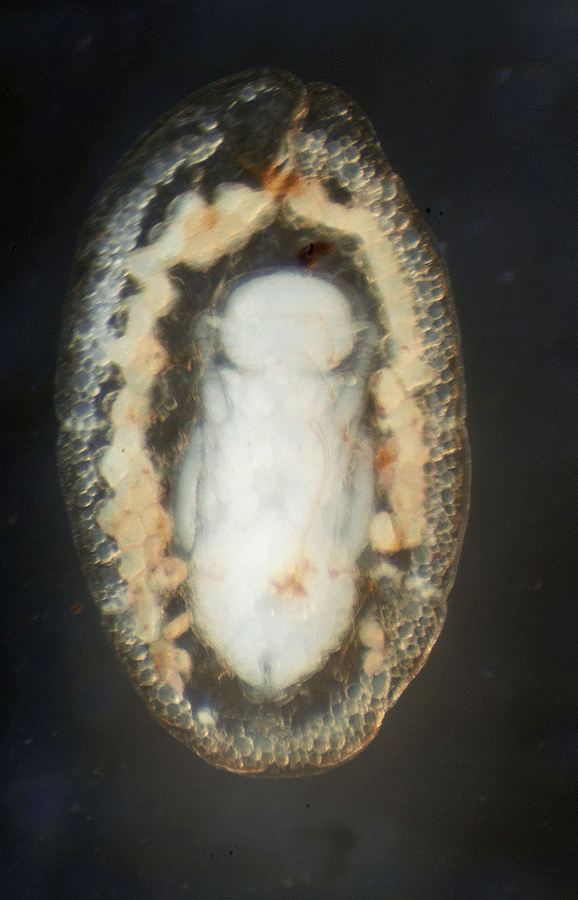
When I submitted these images to <Bugguide.net>, I thought the first image was the ventral view with the hemipterian - like straw mouth part extending from the head. I thought the second image was the dorsal view. The antennae are at the top and appeared to be to be connected to the dorsal portion of the round head.
On January 6, 2025, the following response was received from John van der Linden, a Contributing Editor of <Bugguide.net>: "Hi Susan
I spent a while trying to track down what this might be, but couldn't find a clear answer. I do think it is probably something in Hemiptera or Psocodea.
The outer, transparent, oval case looks most like the covering of a scale insect or a whitefly pupa. More like a scale insect since I believe whitefly pupae are usually a bit less elongate and more neatly symmetrical. The insect inside looks like an (unidentified) pupa to me. In contrast to your suggestion, I would posit that the current image [my first image above] shows the dorsal side of the pupa and the second image the ventral side; a close look at the second image reveals what appear to be the tips of the antennae and bases of legs, which you'd expect on the underside of a pupa; plus it seems more likely that the pigmented side of the animal (current image) would be the upperside.
If we assume the outer covering is the work of a whitefly or scale insect, there are a few possibilities. The insect inside could be the successfully developing pupa of the whitefly or scale insect itself, but I think this is unlikely -- I don't think adult scales or whiteflies usually have this kind of dorsal pigmentation, and also, the fact that the pupa doesn't fill the casing and is tilted at an angle suggests it's not the creator of the outer covering.
The remaining possibilities are (1) a parasitoid wasp pupa or (2) an interloper/inquiline that made its way inside an abandoned oval covering of another insect.
With regard to (2), the color pattern and outline of the insect remind me rather strongly of a barklouse, but these do not form pupae. I think the most likely explanation is (1), a parasitoid wasp pupa developing inside a scale insect covering or a whitefly pupa.
I wasn't able to find very many images of scale insect parasitoids in situ, but here are a couple images of whitefly pupa parasitoids:
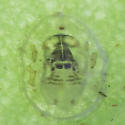

Long-winded response to not really giving you an answer, but I hope it's still helpful. You might try posting on iNaturalist or sharing with a scale or whitefly specialist to see if more can be learned. Neat find!
Final Thing: The final thing I would mention is that, given the very small size of the outer object, it could indeed be an egg, as you had suggested, with the insect inside being the developing pupa of an egg parasitoid wasp. It would need to be an egg with a flattened shape, as you mentioned; I'm not sure where that would leave us, as I'm not too familiar with eggs, other than to say that most of them are not particularly flat. A 1.25 mm egg would probably give rise to a fairly large insect (if it weren't parasitized!)." Note: The images above that were attached to John's message were ones posted by other people on <Bugguide.net>
Return to top

